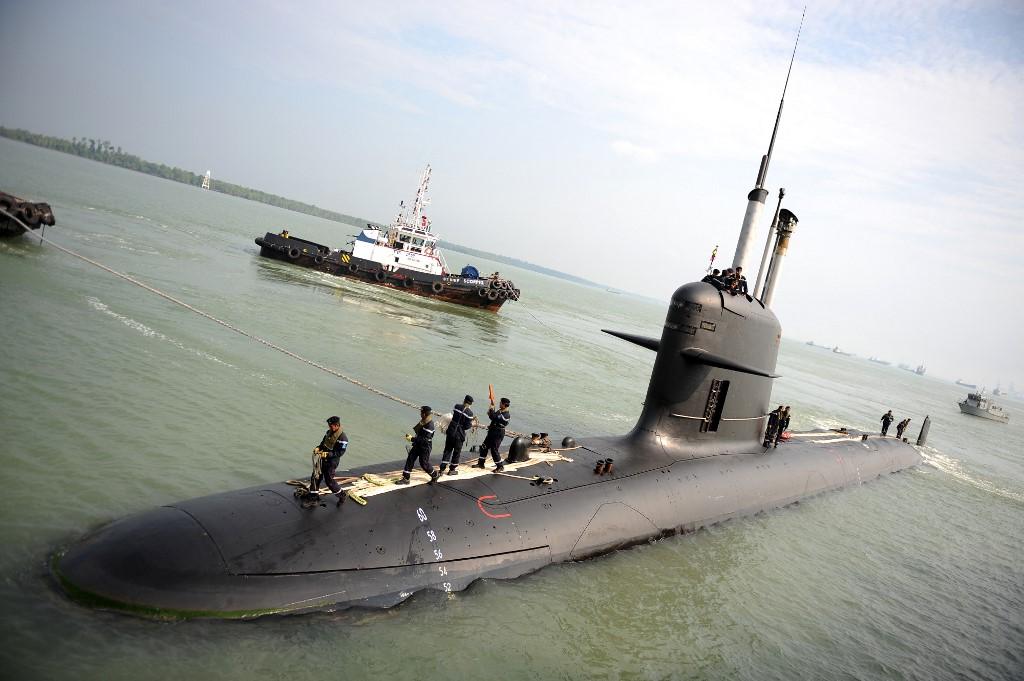Navy man explains the big deal about subs
He says submarines are a crucial part of a country's military assets, amid the continuing debate on the Aukus pact.
Just In
A navy man who has researched underwater and surface warfare has shed light on the importance of submarines in a country’s military assets, as debate continues over the geopolitical effects of a recent security pact between Australia, the UK and the US.
Lieutenant Commander Farizha Ibrahim, an officer in the Royal Malaysian Navy, said submarines are a critical deterrent for any naval force.
“It must be emphasised that once a submarine has reached the open ocean, hunting it down would be a formidable task and require a great deal of resources,” he told MalaysiaNow.
“Both types of submarine, nuclear or diesel, have the standard armament of torpedoes and can attack surface ships and land installations.
“Torpedoes themselves have been significantly improved with homing systems using acoustic or wake homing techniques,” he added.
The trilateral partnership known as Aukus was inked in mid-September to strengthen military capabilities in the face of growing rivalry with China, including a new Australian nuclear submarine fleet and cruise missiles.
“Once a submarine has reached the open ocean, hunting it down would be a formidable task and require a great deal of resources.”
The agreement made Australia only the second nation after Britain to obtain nuclear submarine technology from the US.
It was also a subject of debate in the Dewan Rakyat, with Defence Minister Hishammuddin Hussein proposing an immediate working trip to China to discuss Beijing’s views on the pact. He also stressed the importance of a balance of powers.
China had said that the plan risks severely damaging regional peace and stability, while Indonesia, like Malaysia, warned that it would lead to an arms race in the region.
The Philippines meanwhile had backed the agreement as a means of maintaining the balance of power in the region.
Farizha, who lectures on navigation, seamanship and maritime communication at the National Defence University of Malaysia, said while submarine operations are covert in nature, several instances have been recorded of their use as a platform for the launch of missiles towards ground targets.
He said Tomahawk missiles had been launched from a submerged submarine during the Gulf War against Iraq. In 2007, meanwhile, a Chinese submarine had surfaced amid a US carrier group, catching it off-guard.
“The US Navy was shocked when the Song Class PLAN submarine surfaced amid the carrier battle group guarding the USS Kitty Hawk,” he said.
“It was undetectable not only by the escort ship but also by the submarine in the convoy itself. It gave the impression that it could easily destroy the USS Kitty Hawk, which was the main ship, and that even if it was detected, it would be too late.”
In Southeast Asia, Indonesia has the oldest submarine fleet, having acquired its first vessel in the 1950s. Vietnam purchased two midget submarines from North Korea in 1997, while Singapore bought a second-hand submarine from Sweden two years earlier.
“As a measure of deterrence and as preparation to face any contingency, Malaysia’s procurement of submarines is considered appropriate and provides strategic balance.”
Malaysia has two Scorpene submarines, obtained in 2009 and 2010. Its receipt of the warships was one of the reasons given by Thailand in its decision to purchase three Chinese-made submarines in 2020, although the plan was shelved following a public backlash.
The Philippines, meanwhile, is planning to follow Malaysia’s footsteps in acquiring its own Scorpene.
Farizha said for Malaysia, the issue is the overlapping claims between two or more other countries.
“Overlapping claims between Malaysia and Indonesia, Malaysia and Vietnam, Malaysia and Singapore as well as Malaysia and China could trigger conflict in those areas,” he said.
“Therefore, as a measure of deterrence and as preparation to face any contingency, Malaysia’s procurement of submarines is considered appropriate, and provides strategic balance for Malaysia, especially in the South China Sea.”
The Malaysian navy envisions a fleet of four submarines – two more in addition to the existing Scorpenes.
Farizha said four would be the ideal number of vessels to conduct effective offensive operations and to cover the broader area in the South China Sea.
“In terms of force sustainability, two submarines are vulnerable, especially if one submarine is undergoing maintenance or is non-operational or damaged, and we are limited to just one,” he said.
However, he said assets other than submarines, such as maritime patrol craft, must also be taken into consideration.
“To conduct anti-submarine warfare (ASW), Malaysia must first have detection capabilities such as sonar systems, magnetic anomaly detectors, electronic support measures and radars.
“Platforms to place such sensors such as surface ships, submarines, ASW helicopters and MPAs, too. These platforms can provide counter-measures against submarines such as torpedoes, rocket launchers and anti-submarine rockets,” he said.
Subscribe to our newsletter
To be updated with all the latest news and analyses daily.
